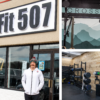If your building or residents use gas appliances (water heaters, furnaces, or boilers), or solid fuel-burning structures such as fireplaces or fireplace stoves, you should double-check that all building equipment is functioning properly. We put together a few tips on how to ensure your residents’ safety regarding gas appliances. For more information, contact your gas company or city building officials. Always keep your building up to code with inspections.
- Schedule an appliance inspection. You should schedule an appliance inspection at least once a year, preferably before the cold weather season. You want to make sure your building’s gas appliances are operating correctly. Otherwise, your residents may experience carbon monoxide poisoning. Carbon monoxide is an odorless and colorless gas, which can lead to serious health issues and even death. In order to prevent carbon monoxide poisoning, have an professional inspect your gas appliances.
- Appliances must meet standard combustion air requirements. Building code requires that gas appliances both in a confined space and unconfined space should meet combustion air requirements. If the air being burned by your appliances contains below the manufacture recommended oxygen content, the flame will begin to produce carbon monoxide.
- Have vents and chimneys inspected. In meeting standard combustion air requirements, your vents and chimneys should be clear of any obstructions. Without proper air-flow, your gas powered appliances could starve for air, lowering the amount of oxygen needed to properly operate. Chimneys and vents should be inspected at least once a year.
- Keep combustable and flammable materials away from gas appliances. Instruct your residents to store any combustable or flammable materials away from your building’s gas appliances. Keep your residents informed about the dangers of gas appliances and carbon monoxide poisoning.




